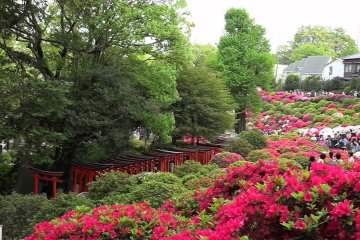

The Nezu Shrine, built in 1705, is one of the oldest Shinto shrines in Tokyo. It is famous for its Azalea Spring Festival, when around 50 species of azaleas are in full bloom from late April to May. Food stalls and games are also part of the festival.
He is also known for his rows of red torii, similar to those in Fushimi Inari in Kyoto. It is one of the few shrines where the original structure has been preserved to this day. The Nezu Shrine has escaped destruction by fire and war, and it is an important cultural asset of the city.
There are numerous cafes and traditional candy shops in the streets around the shrine. B. offer popular Karinto biscuits or taiyaki filled with bean paste.
5-minute walk from Nezu Station


분쿄구의 네즈신사는 언제 찾아도 멋지다. 언덕에 위치한 역사적인 매력이 넘치는 건물, 여러 개의 토리이가 이어져 있는 언덕길과 아름다운 정교하고 치밀하게 가꾸어진 본당, 이것만으로도 충분히 찾을만한 가치가 있다. 그러나 한 해를 통틀어 가장 볼만한 곳은 단연"진달래 축제"이다. 이 축제는 매년 진달래꽃이 피기 시작하는 4월 중순부터 5월 초순에 걸쳐 열린다. 여긴 평일에 가는것을 강력히 추천하고 싶다; 혼잡없이 보는 철쭉이 절대 좋은것이 분명하기 때문이다!

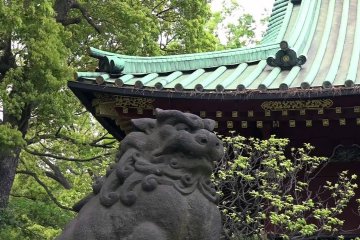
![분쿄 진달래 축제 [종료] 분쿄 진달래 축제 [종료]](https://a0.cdn.japantravel.com/photo/37423-170009/360x240!/tokyo-bunkyo-azalea-festival-170009.jpg)

NOHGA HOTEL AKIHABARA TOKYO is conveniently located in the midst of the electric town Akihabara, also known as the capital of manga and anime. In addition, this neighborhood has an abundance of tech shops, maid cafes and a variety of restaurants. With just a 6-minute walk away from Akihabara station, it provides easy access to explore other areas nearby such as Ueno and Asakusa. This hotel embodies the rich cultures of music, art and food. Nohga’s concept of music is derived from Akihabara’s local history, starting as a district of radio and wireless component merchants in the late 1920s. The artistic and luxurious space throughout the hotel is achieved by featuring art and amenities designed in collaboration with craftsmen from around Japan. As for the food menu, it’s seasonal fresh ingredients are sourced domestically. The glasses and dinnerware served are collaborations with stores in the surrounding area. All 120 non-smoking guest rooms feature an ensuite bathroom with a rain shower, in-room safety box, mini fridge, USB plugs, free Wi-Fi, a high-quality bluetooth speaker and flatscreen TV with original music and film. The lounge area and a compact 24-hour gym can be found near the reception on the second floor. Services include laundry (from 2,750JPY) and a 24-hour front desk with a check-in time of 3PM and check-out time of 11AM. For sightseeing you can rent a Tokyobike for the day (2,000 JPY/day) to explore the vicinity.

Oakwood Premier Tokyo comes from a brand of standout luxury hotel & service apartments right at the heart of the Tokyo metropolis. It is located in the business hub of Marunouchi with JR Tokyo Station in close proximity. This will allow guests and travelers to easily access the city's extensive transport network and visit various landmarks such as Imperial Palace, Tsukiji Fish Market, Ginza and Shopping District. Boasting 123 luxurious apartments on the upper floors of a multi-serviced complex, each room offers a magnificent view of the city, not to mention all furnished and a fully-equipped kitchen set which is rarely seen in your everyday service apartment. Without doubt, these spacious tranquil retreats are curated to give you the amenities and services of a luxury hotel and a feeling of home. They are good options for both business executives and leisure travelers from one night of a short-stay to a few weeks/months of mid-to-long-term stay.
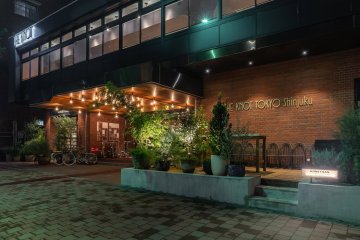
Located right next to Shinjuku Chuo Park, THE KNOT TOKYO Shinjuku is a modern hotel with an exceptional design and easy access to the nearby Shinjuku train station and the Meiji Shrine. The 14-story hotel building was renovated and reopened in August 2018 as THE KNOT TOKYO Shinjuku . The western-style rooms offer a park view on the top floor as well as a newly opened terrace suite. The spacious atrium design offers a relaxed atmosphere and connects the restaurant, bar, lounge and lobby with one another. One of the highlights of THE KNOT is the delicious dishes. There are six areas in which food and drinks are offered. From the grill area to high-quality black tea and fresh bread, everything is on offer.

Bunny Cafe Moff Rell in Tokyo's Chiyoda Ward offers a chance to interact with adorable rabbits. You can make reservations for the cafe by phone, or you can visit and pay at the store before entering. The cafe provides 30- and 60-minute courses, and you can play with or feed the bunnies. If you are unsure about how to treat the rabbits, don't worry! The staff members will kindly explain everything to you. Minimum age is 10 years old.

PIZZERIA & BAR NOHGA is an all day dining restaurant interpreting a fusion of “Spanish Italian” cuisine and has a kitchen to table design. There is a casual bar area and restaurant where you can take a peek inside the open kitchen whilst enjoying your meal. Visit the cafe for a range of coffees and teas along with an offering of tapas snacks and seasonal desserts. The cafe also offers an assorted dessert and all-you-can-drink cafe set. Breakfast takes on the art of sharing, where a range of platters are combined with focaccia and your choice of eggs cooked your way. Coming for lunch? Choose from a selection of pizzas, pastas and salads. Each lunch menu is accompanied with homemade soup, iced tea and focaccia. Dinner time offers a range of exquisite tapas and pizzas that can also be shared. Breakfast: 07:00 - 10:00, Lunch 11:30 - 14:30, Cafe 14:30 - 18:00, Dinner: 18:00 - 23:00 with last order at 10pm.

Ayam-YA is a certified halal ramen restaurant found in the Okachimachi area of Tokyo, between Asakusa and Ueno, and not far from Assalaam Mosque. A sister branch in Kyoto also exists.
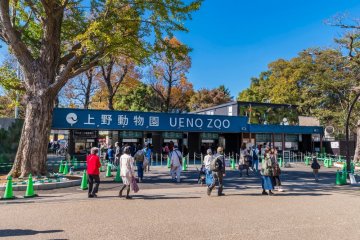
Ueno Zoo is the oldest zoo in Japan and one of Ueno's greatest attractions. The zoo began as a collection of wild animals affiliated with the National Museum of Natural History and first opened as a public zoo on March 20, 1882. The zoo has expanded significantly since then and is now home to over 3,000 animals and 400 different species. The attraction of Ueno Zoo, however, is the pandas, also because they have successfully reproduced. Ueno Zoo is actively committed to the conservation of wild animals. The zoo is divided into two sections, a west and an east park, each with different animal species. The two areas are connected by a bridge. To the east are the pandas, Asian elephants, large numbers of bears and larger mammals like gorillas, tigers and lions. In the west area there is a petting zoo and a reptile and amphibious house. This area also focuses on animals from Africa: rhinos, hippos, giraffes and zebras. A five-story pagoda and a tea house from the 17th century round off the visit to the zoo and give this historic zoo a typically Japanese touch.
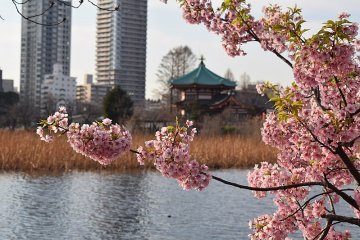
The Ueno Park (Ueno Koen) in the Taito district of Tokyo is a public park and with more than 10 million visitors annually the most popular city park in Japan. It includes the area of the Kaneiji Temple, which was built there to symbolically protect Edo Castle, which is in the Boshin Civil war in 1868 was largely destroyed. Today's park is home to a variety of museums, including the Tokyo National Museum, the National Museum of Natural Sciences, the National Museum of Western Art, and the Tokyo Prefecture Art Museum. The Ueno Zoo, the oldest animal park in Japan, is also located here. In the southern part of the park is the Shinobazu pond, which is based on Lake Biwa near Kyoto and in the middle of which is the Bentendo temple hall. The Kiyomizu Kannon Temple - also based on its model in Kyoto - and a Toshogu shrine dedicated to the Tokugawa clan were also built on the large area. At the same time, the Ueno Park with its more than 1000 cherry trees is a popular destination, especially in spring, to admire the cherry blossoms while doing a hanami and picnic under the trees.

Koishikawa Botanical Garden, located in Tokyo’s Bunkyo Ward, is a beautifully landscaped naturespace owned by Tokyo University. The garden dates back to 1684 when it was established as a medicinal herb garden for the Tokugawa shogun. The 16-hectare (40-acre) garden is home to 4,000 plant species and includes both a botanical garden and arboretum. In addition to being a public asset to the city, the garden also acts as an extension of Tokyo University where students and professionals can study and research plant life. The garden is also used to conserve and propagate endangered species. Aside from its educational applications, the garden is a popular spot to wander and admire nature. The thousands of tree and plant species, most of which originate in eastern Asia, are immaculately sculpted into a Japanese landscape garden, making for a pleasant stroll. Enjoy camellias, maple trees, bonsai trees, plum trees, and many more! The garden is an especially pleasant spot during cherry blossom season. Being less crowded than other venues, the garden is a relaxing spot to admire the dainty blossoms and features multiple cherry blossom species. Walk along cherry tree-lined paths or picnic under pastel petals. During autumn, visit the park to witness its vibrant red Japanese maple trees. Admission to the garden costs 500 yen for adults and 150 yen for children.